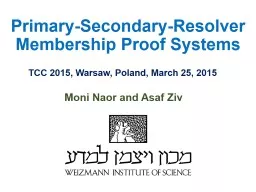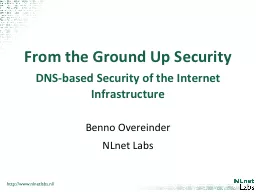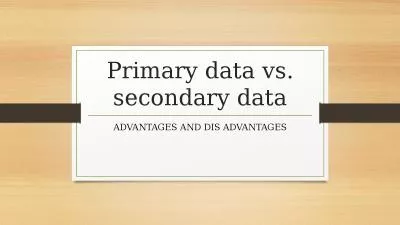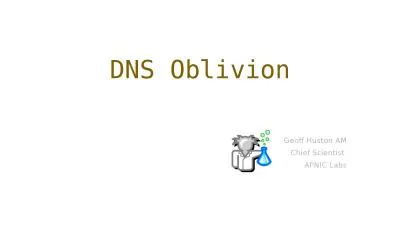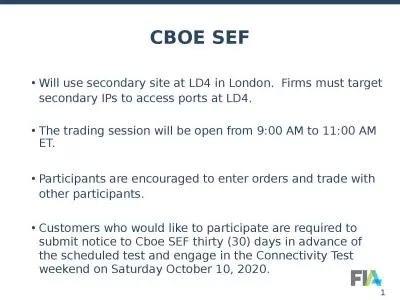PPT-Primary-Secondary-Resolver Membership Proof Systems
Author : debby-jeon | Published Date : 2018-11-16
Moni Naor and Asaf Ziv TCC 2015 Warsaw Poland March 25 2015 Motivation DNSSEC Primary nameserver Secondary nameserver qcom NonExistent Zone File acom ccom zcom
Presentation Embed Code
Download Presentation
Download Presentation The PPT/PDF document "Primary-Secondary-Resolver Membership Pr..." is the property of its rightful owner. Permission is granted to download and print the materials on this website for personal, non-commercial use only, and to display it on your personal computer provided you do not modify the materials and that you retain all copyright notices contained in the materials. By downloading content from our website, you accept the terms of this agreement.
Primary-Secondary-Resolver Membership Proof Systems: Transcript
Download Rules Of Document
"Primary-Secondary-Resolver Membership Proof Systems"The content belongs to its owner. You may download and print it for personal use, without modification, and keep all copyright notices. By downloading, you agree to these terms.
Related Documents

